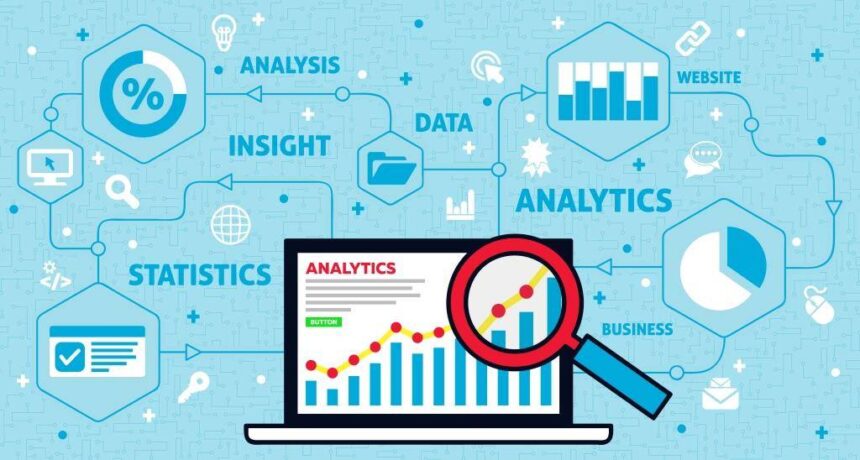At a time in our history when there is more data than ever before, the overwhelming majority of companies have yet to see the full potential of better data insights. PwC and Iron Mountain recently released a survey on how well companies are gaining value from information. The results showed a huge disconnect in the information that is available to companies and the actual insights being derived from it. According to survey findings:
- Only 4% of businesses can extract full value from the information they hold
- 43% obtain very little benefit from their data
- 23% derive no benefit whatsoever
- 22% don’t apply any type of data analytics to the information they have
The potential of utilizing data can equate intro very big wins and even greater revenue. Take a look at this statistic based on research by McKinsey: A 15-20% increase is huge! So why aren’t companies taking advantage of this and implementing the necessary solutions to derive value from information? A Marketing Analytics Report from the Technology Marketing Community on LinkedIn conducted a study to determine what the biggest challenges were to turn their data into usable insights. The study revealed that the biggest problems centered around a lack of systems integration, poor data quality, and the time required to collect and analyze data. Historically, CMOs have relied on gut instinct to make decisions. But marketing has now become a science, and data management tools and solutions are now critical for competitive survival. Here are four steps you can take to transform your data chaos into real information that will drive revenue.
1. Establish an ROI
Establishing a strong return on investment (ROI) will help get new data projects off the ground. Begin by documenting any problems caused by incorrect data, including missed opportunities, and wasted marketing spend. This doesn’t have to be a time intensive project, but gather as much supporting documentation as possible to justify the investment. Check out the following two examples of companies who encountered data problems and correlated a data management project to increased ROI.
2. Mid-Sized Retailer
Numerous errors in billing and shipping were causing frequent product returns, inaccurate deliveries and queried invoices. The problem was tied back to inaccurate customer addresses. The customer database contained approximately 100,000 customers. If addresses were improved by 5% or 5,000 customers, product redelivery costs would be reduced, cash flow would increase when invoices are paid in a timely manner, and customer service representatives would become more productive when they no longer need to spend time resolving customer invoicing issues.
3. National Financial Institution
Customer data was stored in different systems, spreadsheets, and databases. The marketing department had no way to access a 360-degree customer view in order to identify new revenue opportunities. By integrating each of these data sources into one database, unified household views can be established and analyzed to make informed marketing offers. For example, using common identifiers, the “Smith” household can be linked together. By discovering that the Smiths have a college-age son, an offer can be made for a student savings account. To further help establish an ROI, many vendors offer a complimentary data analysis to quickly identify discrepancies, inaccurate data, missing information, and other problems that may be affecting productivity.
4. Get Your Data Together
Hopefully once you have established a strong ROI, you are ready to move forward and get your data together. A data integration solutions provider will work with you to identify the data you want to integrate and your goals for the project. While many companies believe they need to have a data scientist in place to do this, a data consultant and technology provider does the heavy lifting to seamlessly guide you through this process. In our experience, we have worked with clients to integrate data and establish a marketing database in as little as 8 weeks.
5. The Overlooked Step of Data Enhancement
Once your data is gathered, cleaned and available in one marketing database, you will probably be ready to dive head first into using. Unfortunately, you may still be missing a lot of valuable information on your customers and prospects. Customer records may be missing phone numbers or email addresses. At this point, you also have the opportunity to add valuable demographics to better understand your customers. Example of additional data you can add to your database includes age, income, occupation, presence of children, lifestyle, interests, and more. If you can think of it, the data is probably out there.
6. Better Analytics through Visual Data Discovery
Analyzing data through visual data discovery is becoming more prominent. Research has shown that when data is represented graphically, people are able to retain the information better, which in turn, speeds up the time to insight. Traditional methods of analytics, based on reports and static graphs, are no longer enough to support quick decision-making. Visual data discovery allows a user to interact with data to explore multiple data sets, visualize correlations in data, and apply filters to quickly identify patterns. For example, a marketer may want to better understand which products are being used by high-value customers. By viewing the data as a Venn diagram, a marketer can gain a better understanding of each customer group and which products may have an opportunity for up-sell. The user can then drill down into each segment for further analysis or to export the query for a CRM initiative or marketing campaign. Companies using visual data discovery are more apt to find the information they need, when they need it, according to Aberdeen’s survey of organizations using visual data discovery. Companies using visual data discovery are also able to get analytics into the hands of 48% more employees, compared to those companies that depend only on reporting tools and spreadsheets for business intelligence. Information is being generated every moment of every day. The flow of data never stops; however, by implementing measures to capture, cleanse, and analyze this data, you can extract meaningful insights to power your business to greater heights.








